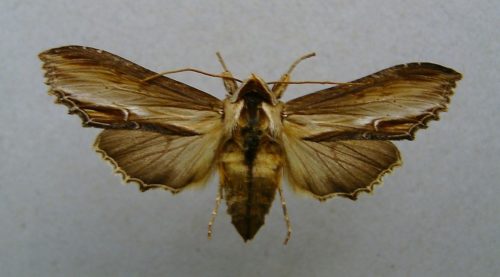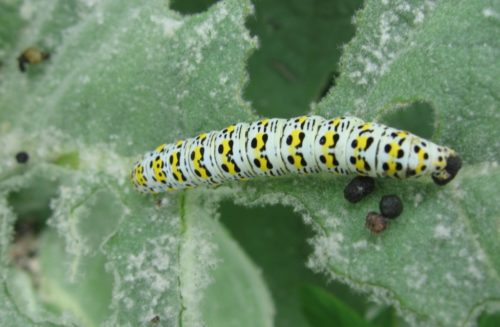This moth, an owlet moth, measures about 50 mm. This butterfly likes sandy soils (dune areas) and is rare outside the dunes.

Mullein moth (Cucullia verbasci, synonym Shargacucullia verbasci). This moth, a owlet moth, measures about 50 mm. This butterfly likes sandy soils (dune areas) and is rare outside the dunes. There is only one generation per season: from late April to early July the butterflies fly around, and from May through July the caterpillars can be found on the host plants: mulleins, figworts and butterfly bush. The caterpillars eat a plant bare in a short period of time. The cocoon overwinters as a pupa in the soil.
Both the butterfly and the caterpillar are very similar to those of the water betony (Shargacucullia scrophulariae) – the difference is in the details. Caterpillar: difference can be seen in the two segments after the head. Butterfly: the water betony has two distinct white spots along the inner edge. In the Mullein moth, these are less obvious.
Where to find
- Mullein (Verbascum)
- Figworts (Scrophularia)
- Butterfly bush (Buddleja davidii)
- Lizard orchid (Himantoglossum hircinum)
Control
If the plant is not already full of caterpillars, remove the caterpillars by hand. If not, the plant or shrub can be considered lost. A butterfly bush will sprout again the next year – after winter pruning.
Prevention
Turn over the soil around affected plants and shrubs. Any pupae can then be eaten by birds and hedgehogs.

